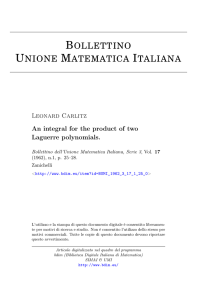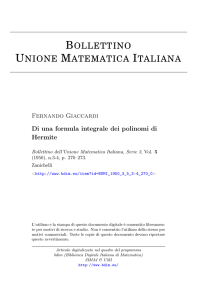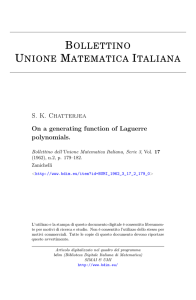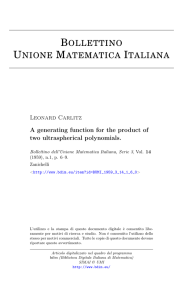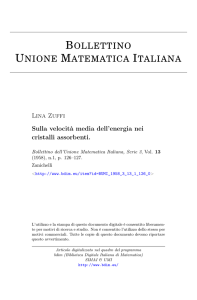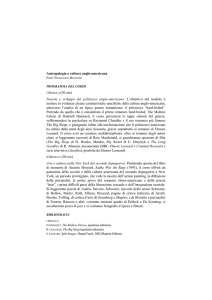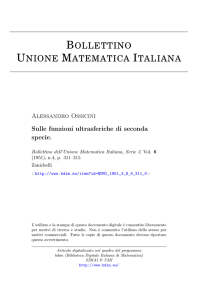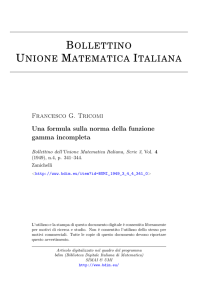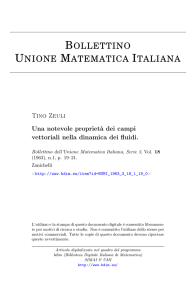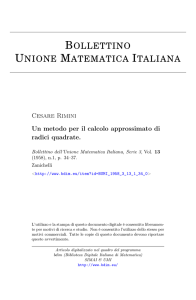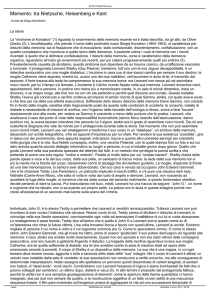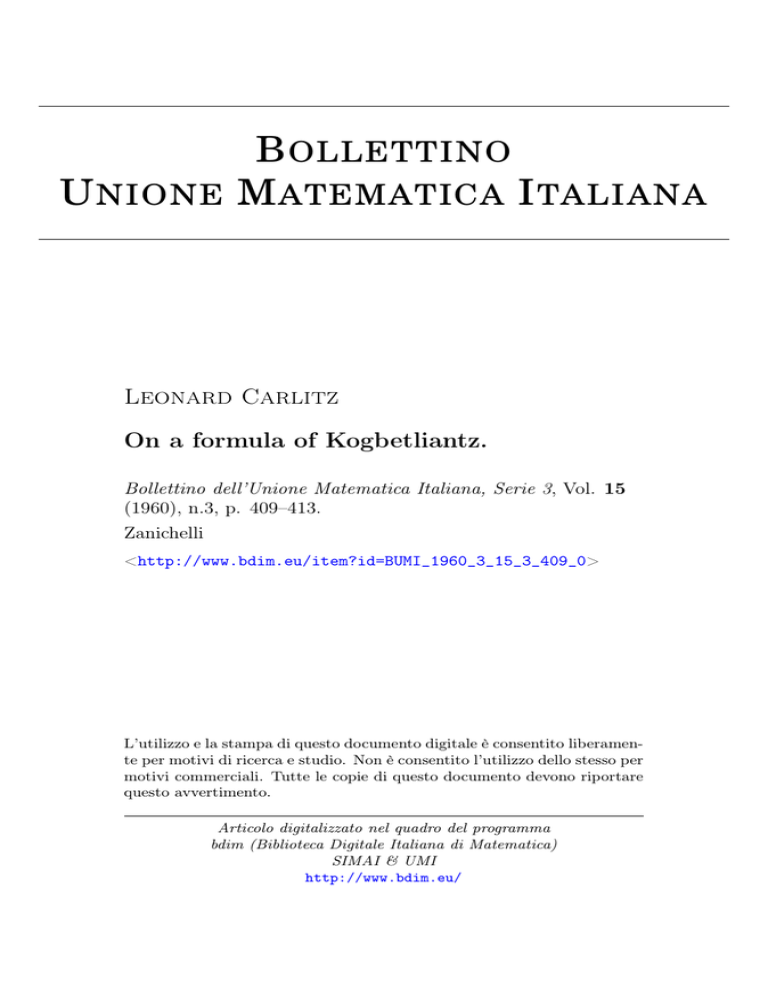
B OLLETTINO
U NIONE M ATEMATICA I TALIANA
Leonard Carlitz
On a formula of Kogbetliantz.
Bollettino dell’Unione Matematica Italiana, Serie 3, Vol. 15
(1960), n.3, p. 409–413.
Zanichelli
<http://www.bdim.eu/item?id=BUMI_1960_3_15_3_409_0>
L’utilizzo e la stampa di questo documento digitale è consentito liberamente per motivi di ricerca e studio. Non è consentito l’utilizzo dello stesso per
motivi commerciali. Tutte le copie di questo documento devono riportare
questo avvertimento.
Articolo digitalizzato nel quadro del programma
bdim (Biblioteca Digitale Italiana di Matematica)
SIMAI & UMI
http://www.bdim.eu/
Bollettino dell’Unione Matematica Italiana, Zanichelli, 1960.
On a formula of Kogbetliantz.
Nota di
LÉONARD CARLITZ
a (Dûrham, N. C , U. S. A.)
Summary. - A simple proof is given of KOGBETLIANTZ'S formula (1) below ;
a generalized version of this formula is given in (5). Also analogs of
(t)j for the LAGUERRE and HERMITE polynomials are obtained*
1. KoGBETLiANTZ [1] has recently obtained the elegant formula
(1)
ë*Âas, y) -+- eyfty, x) = e*-* - Jo(2
where
(2)
and 70(#) dénotes the BESSEL. function with imaginary argument.
has derived the formula hj means of LAPLACE;
transformation. The formula can be obtained very simply as follows.
Since
KOGBETLIANTZ
it follows from (2) that
It is easily verified that
n
-e~x
S
x
-;
410
LEONARD CARLITZ
so that
y) = S ^
-
S
-,
Therefore
OO
sfiT
OO
/yW
r=o *" • n~o % •
OO
r—o
evidently prores (1).
2, It may be of interest to mention that the functional équation
(3)
erf{x, y) -+- eyf{y, x) = e*+v -
F(xy),
ce
y)=je-iF(yt)dt
and JF(£) is analytic about the origin, characterizes J o . Indeed if
we put
w
n=0
n ! n!
then as above
|-
S —\y*
n—O% *
S
r=n+i
ON A FORMULA OF KOGBETLIANTZ
It follows that
£
x)= S £\y« S £
OO
-H
J
OO
2 ^=ar
S
r=o »"!
«=r
j
Comparison "with (3) gives An = l, so that
F{e)
=
2
^
Hence the only function F(^). analytic about the origin, that satisfies (3) and (4) is
3. KOGKBETLJANTZ' s formula can be generalized as follows. Put
X
tJi*, y) = %f m, y) = ƒ « - ^
o
Then we have
X
n
ç
so that
no ^!
^4
sl
n=o
412
LEONARD CAELITZ
It follows that
4*fr(*>
y) •+•
•=i n=o *
!
(n + a) !
^
M~0
n ! (n -+- s) !
Since
we get
(5)
eY,(*. «/) + «»/U», *) = e ^ » — J0(2
—
(x3-
S
3=1
For r - ö , (5) evidently reduces to (1).
4. For the
LAGÏÏERRE
polynomial [2, p. 97]
- — s/
r!
we have
Since
/ *+i \ l ^ : = 2 ( - ^
ON A FORMULA OF KOGBETLIANTZ
413
it follows that
(6)
e*[e-'L%\xt)dt = - S (J
In particular for a r= 0, (6) reduces to
e* (e-'Ln(yt)dt = S
J
0
S-0
For the Hermite polynomial [2, p. 102]
we get similarly
=- 5
S
(—l)"^
REFERENCES
[1] E. Gr. KOGBBTLIANTZ, Sur une identité remarquable concernant la
fonction I o , Chiffres, 1 (1958), pp. 121-122.
[2] G. SZEGÖ, Orthogonal polynomials, New York, 1939.

